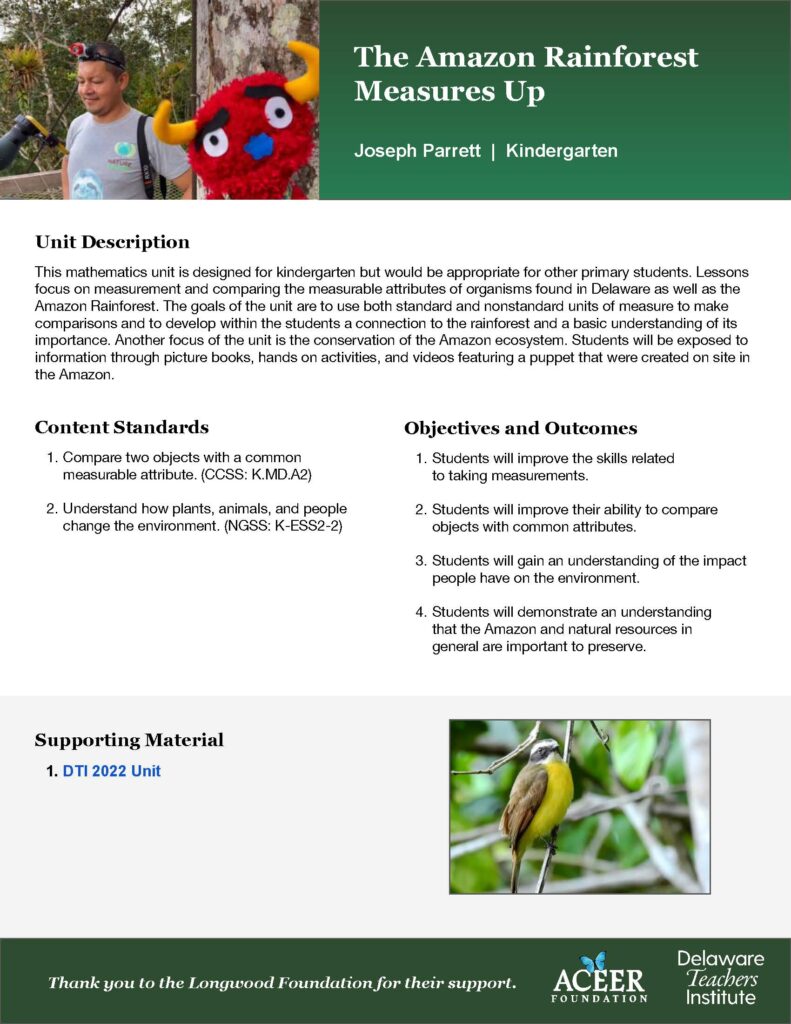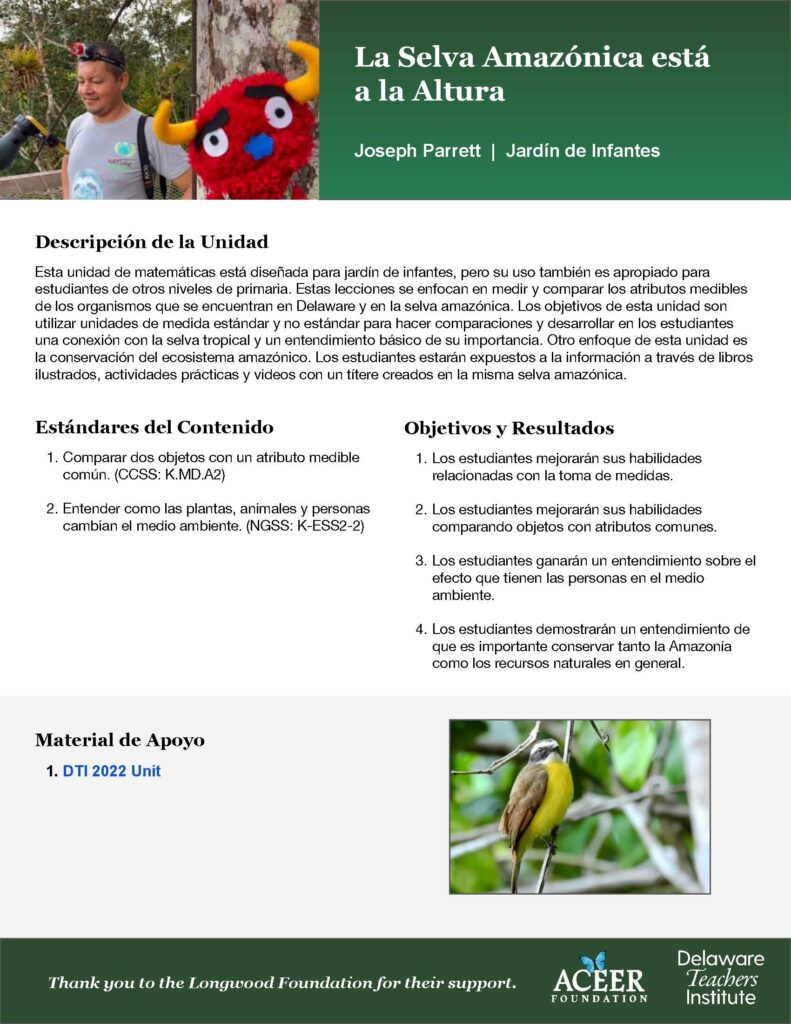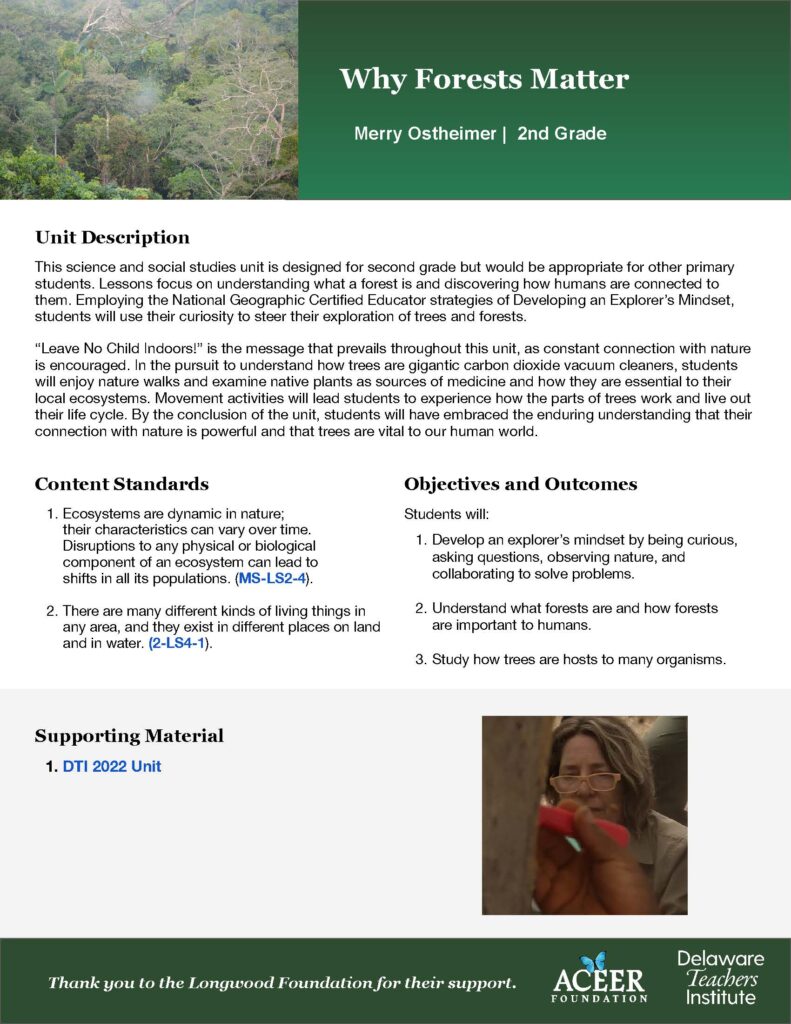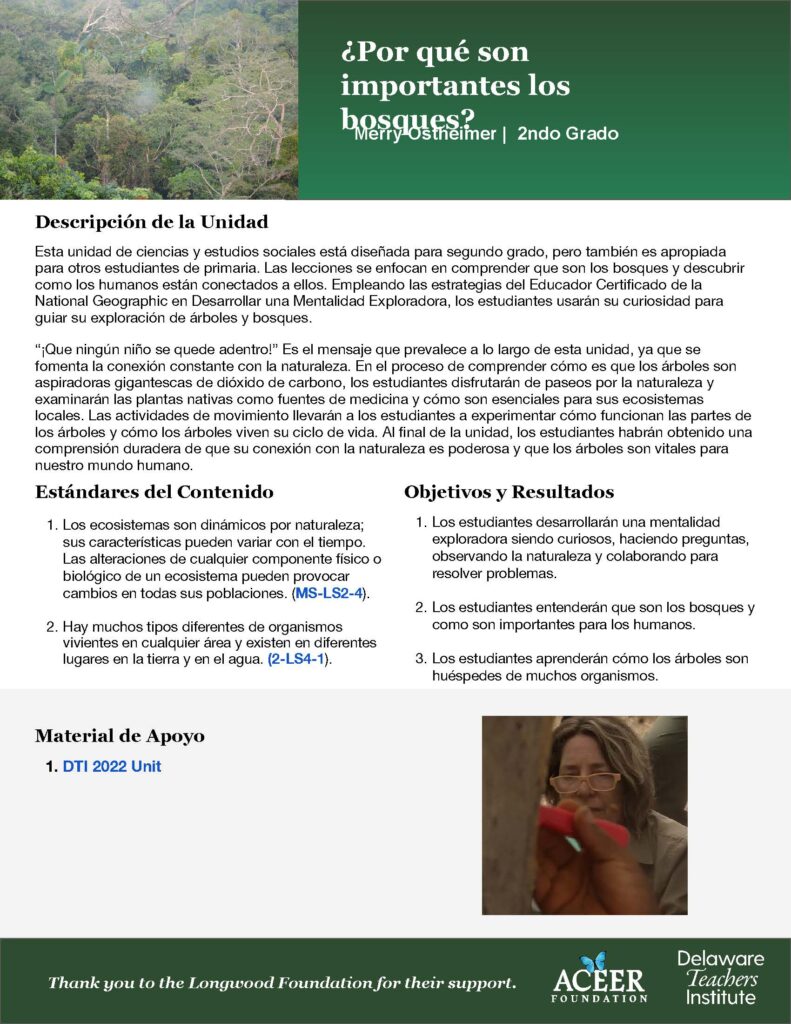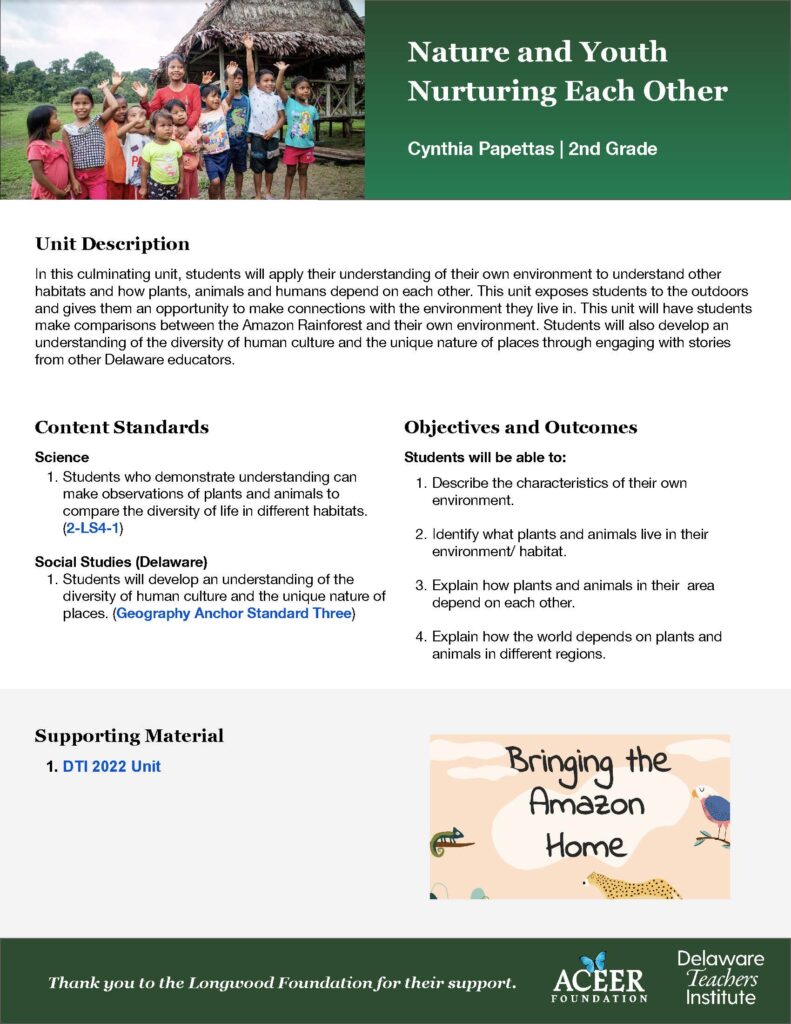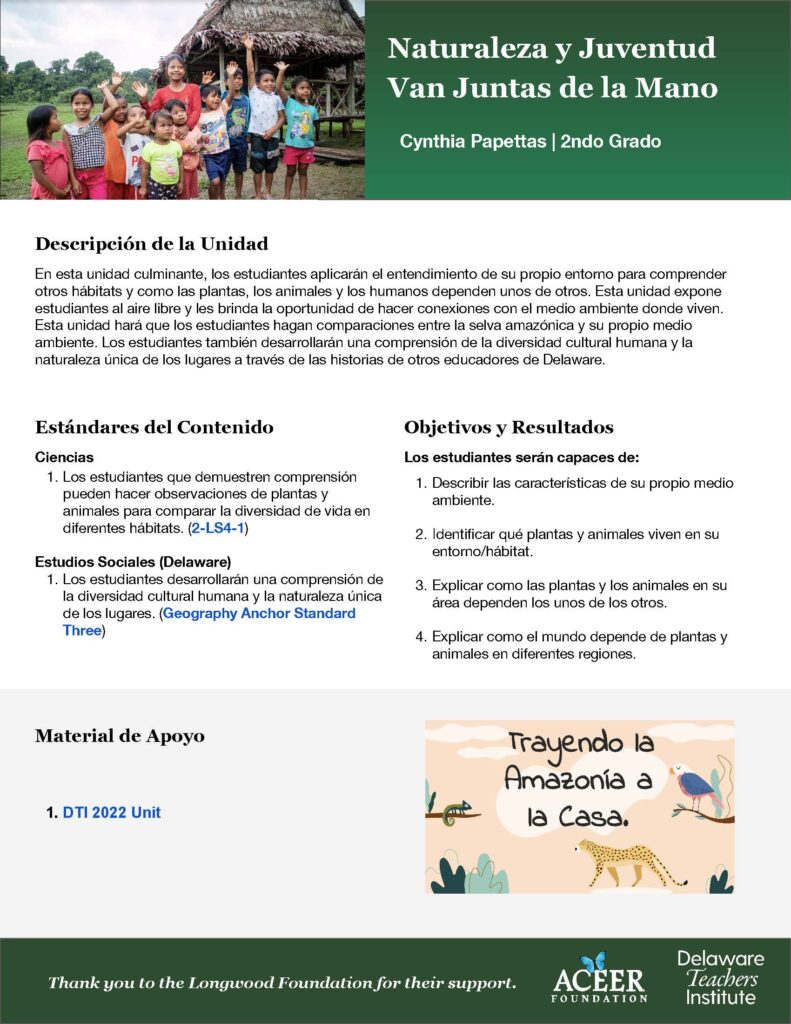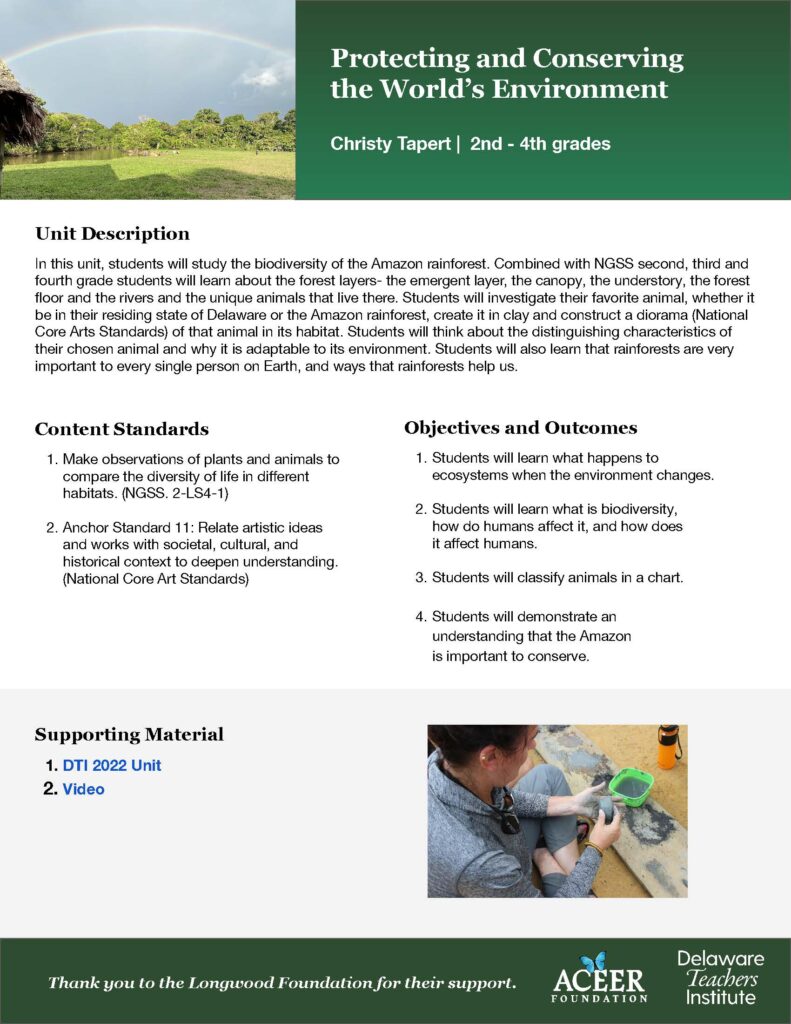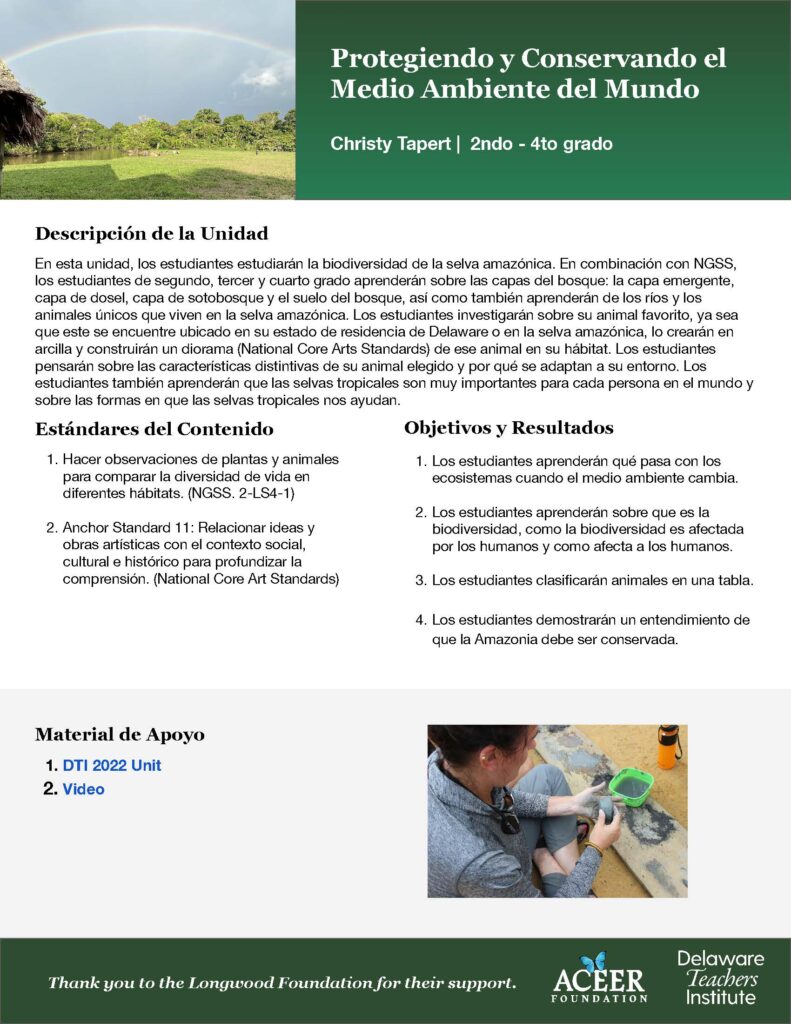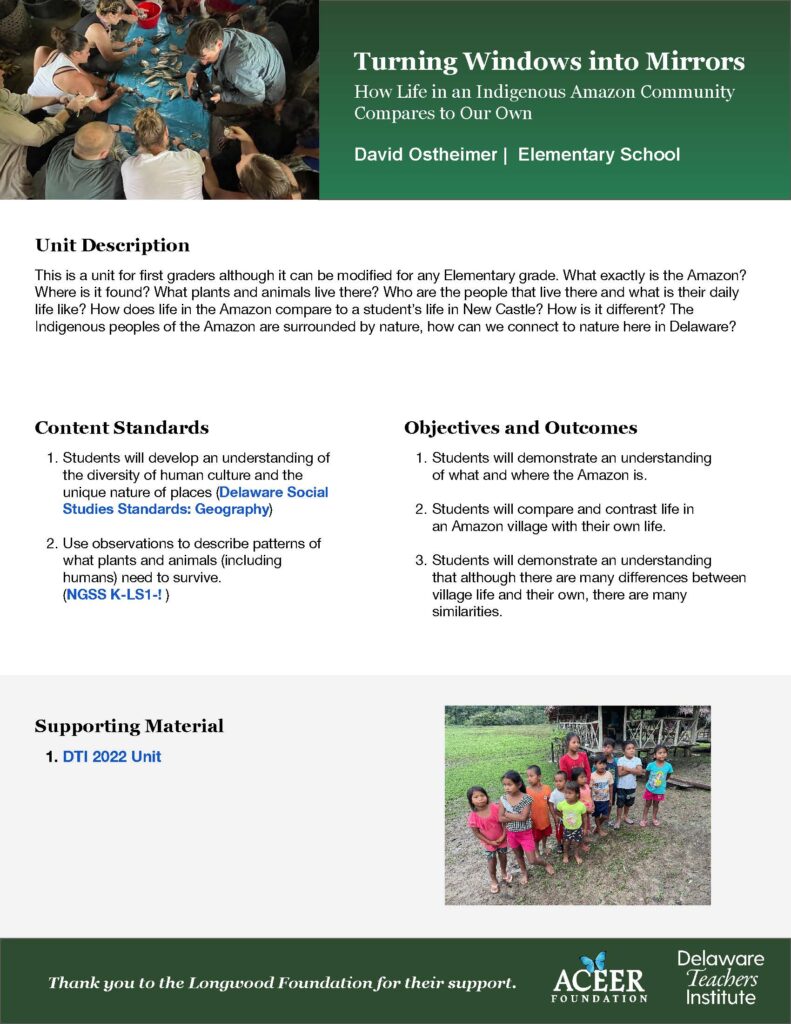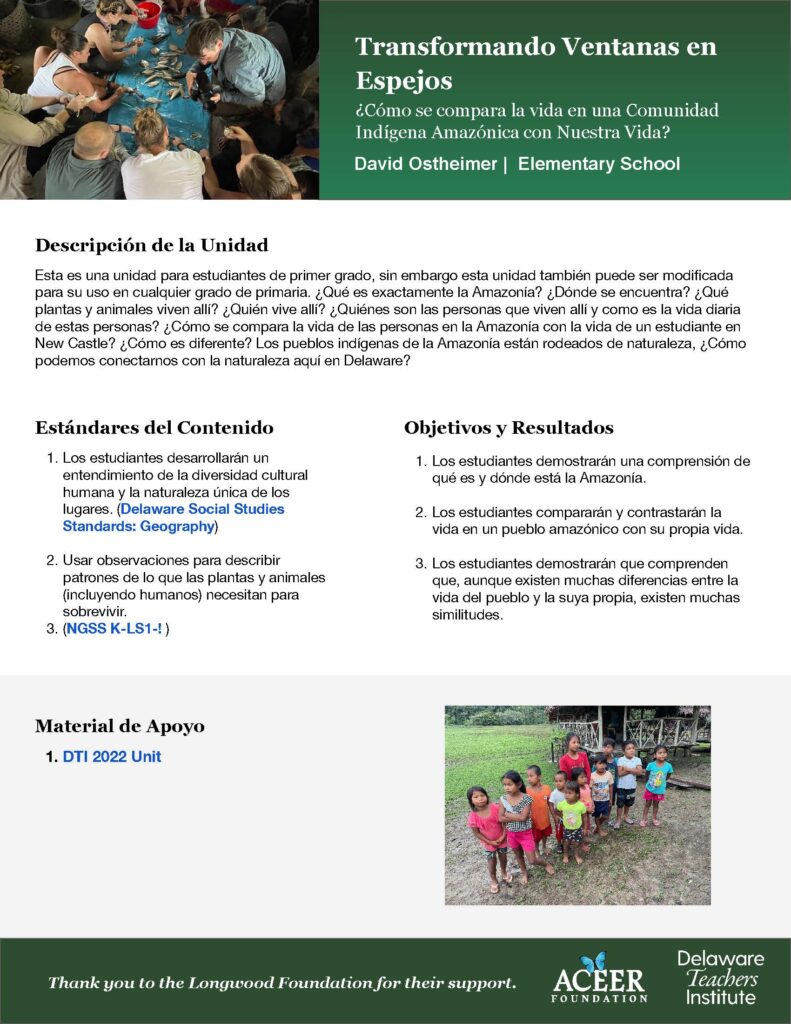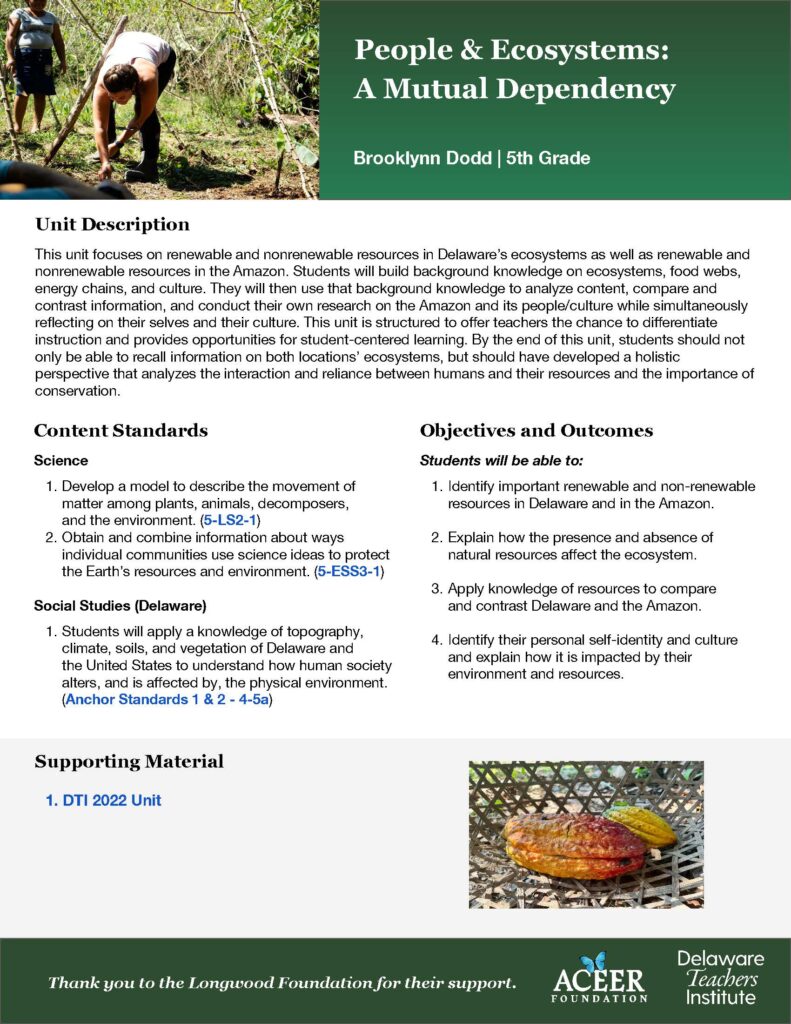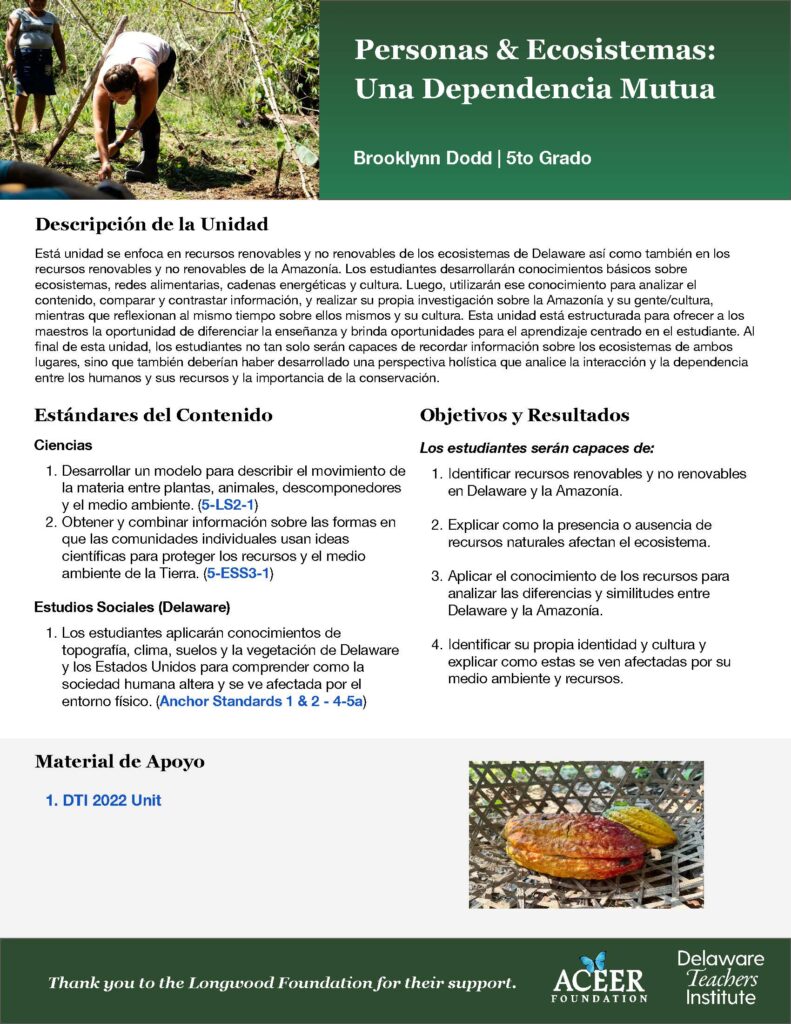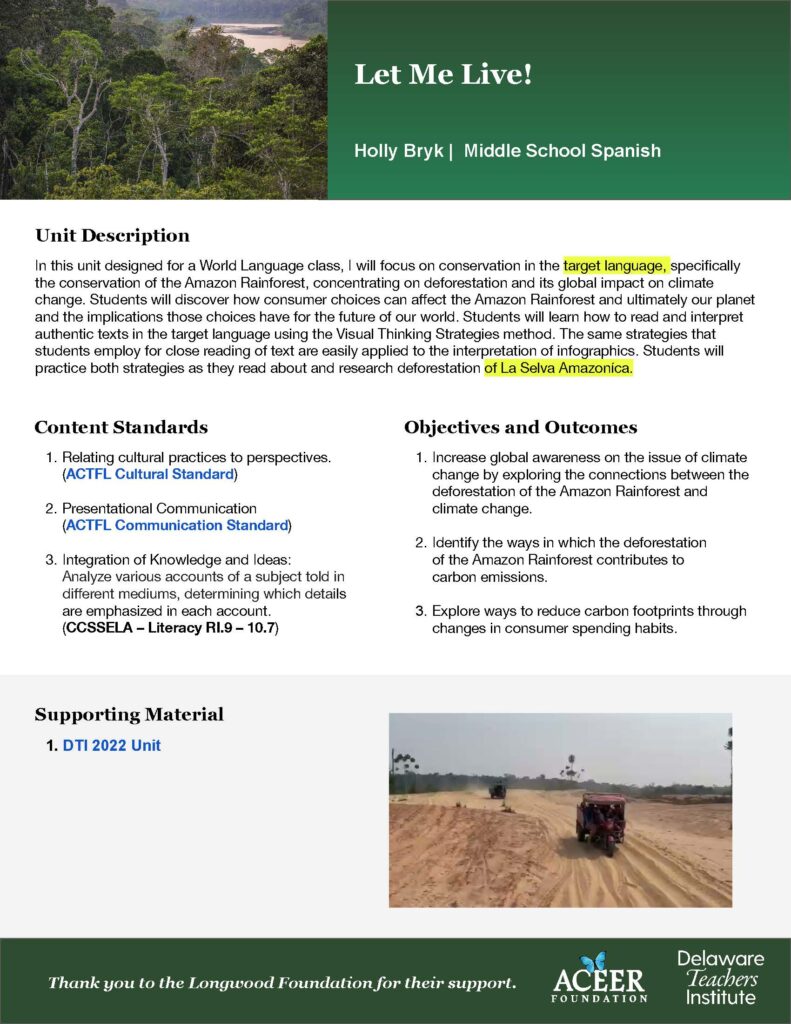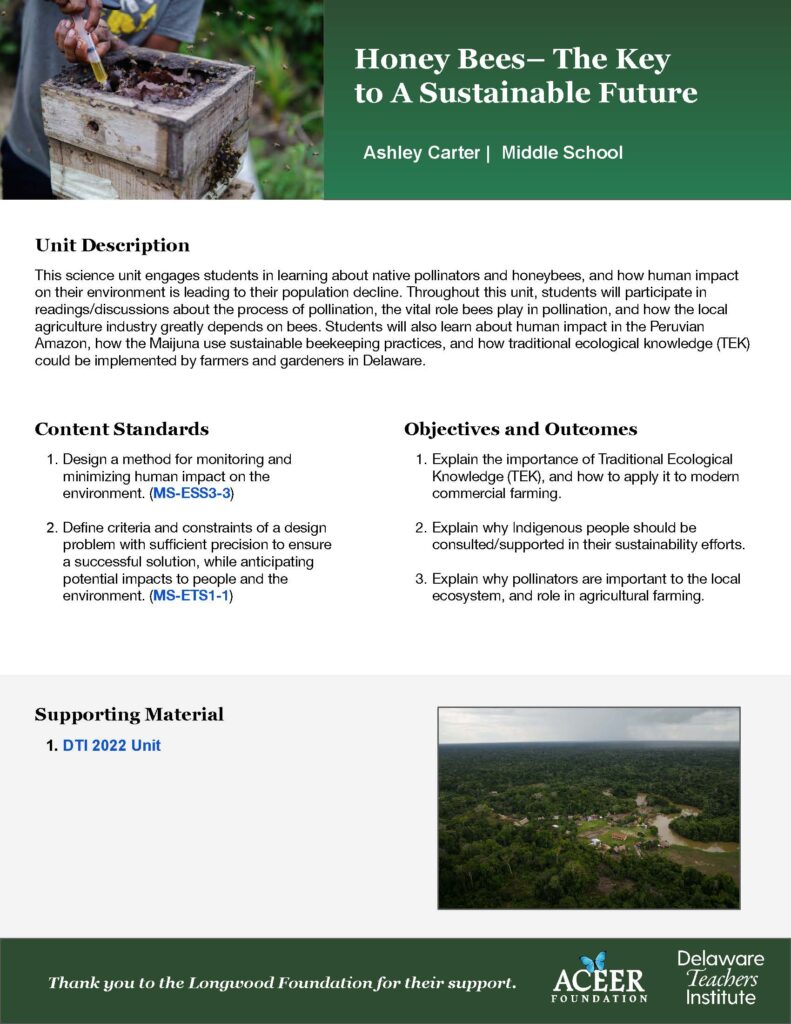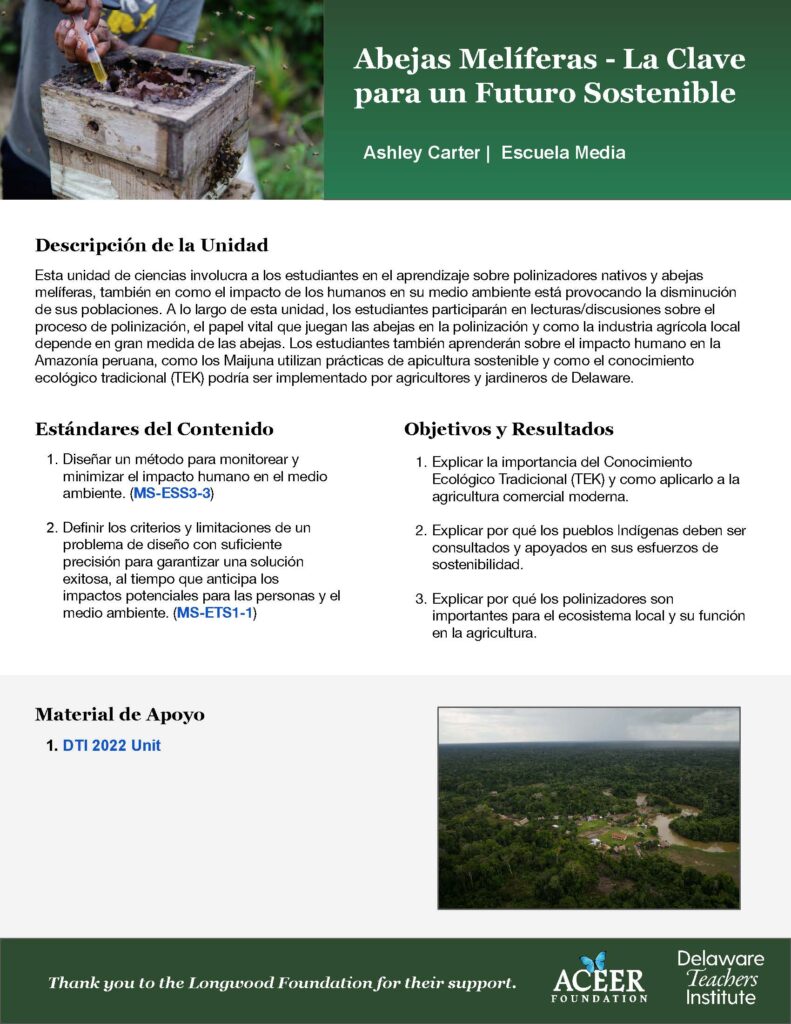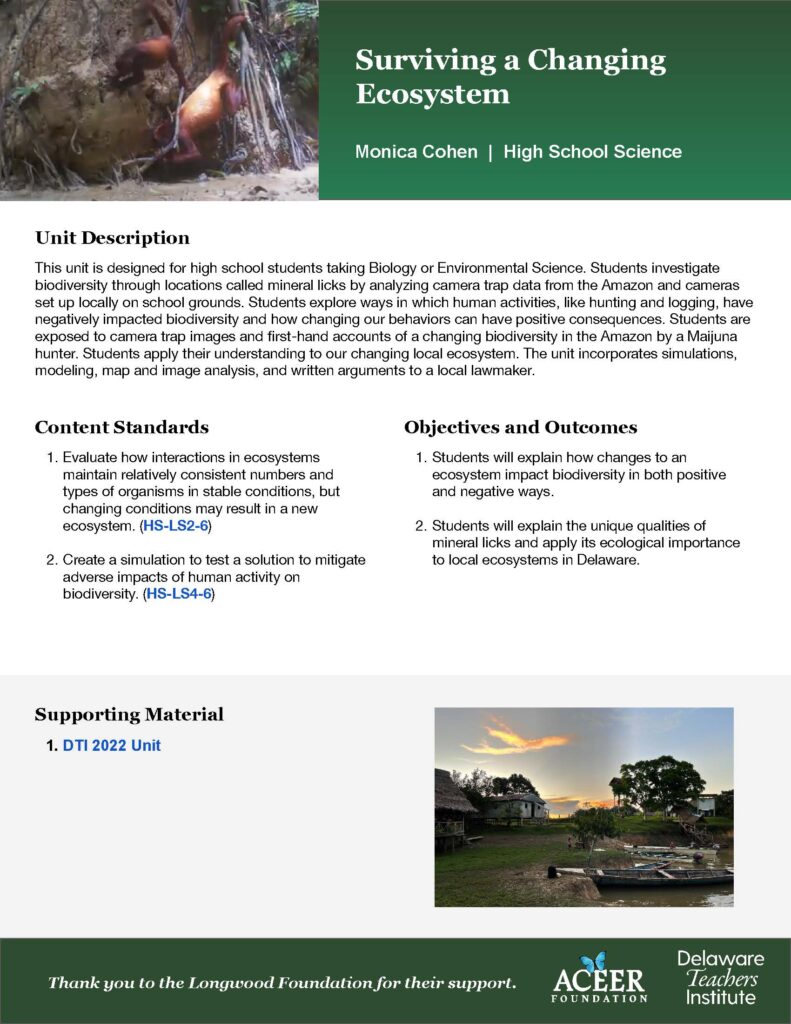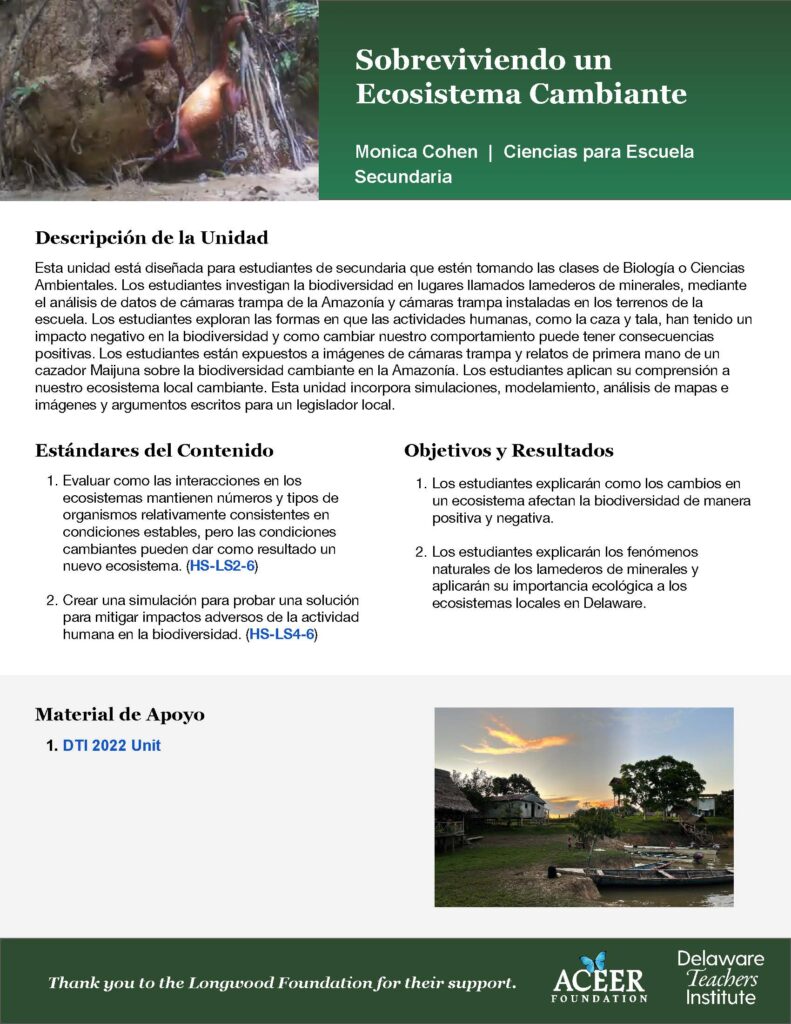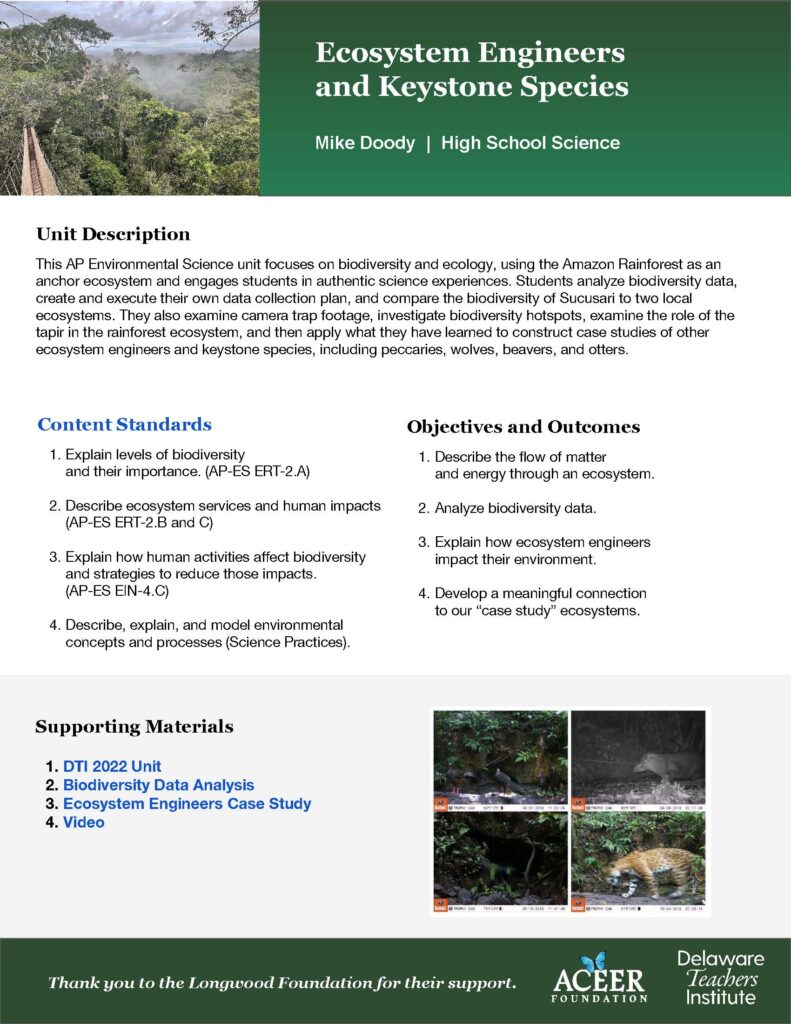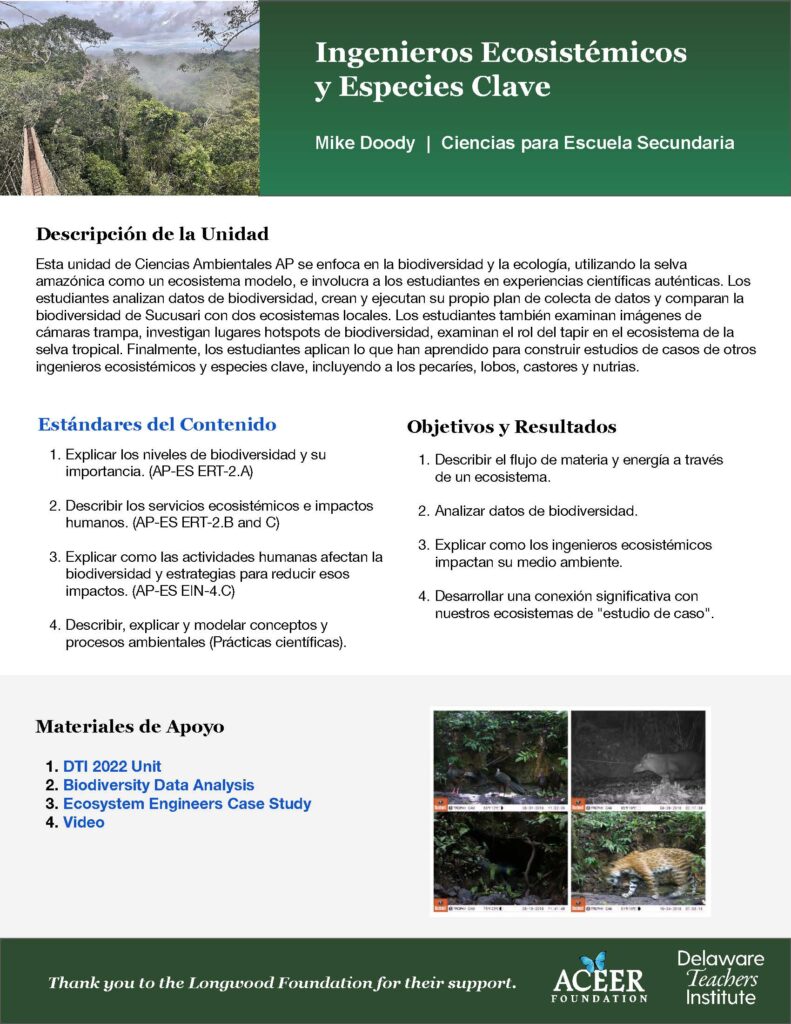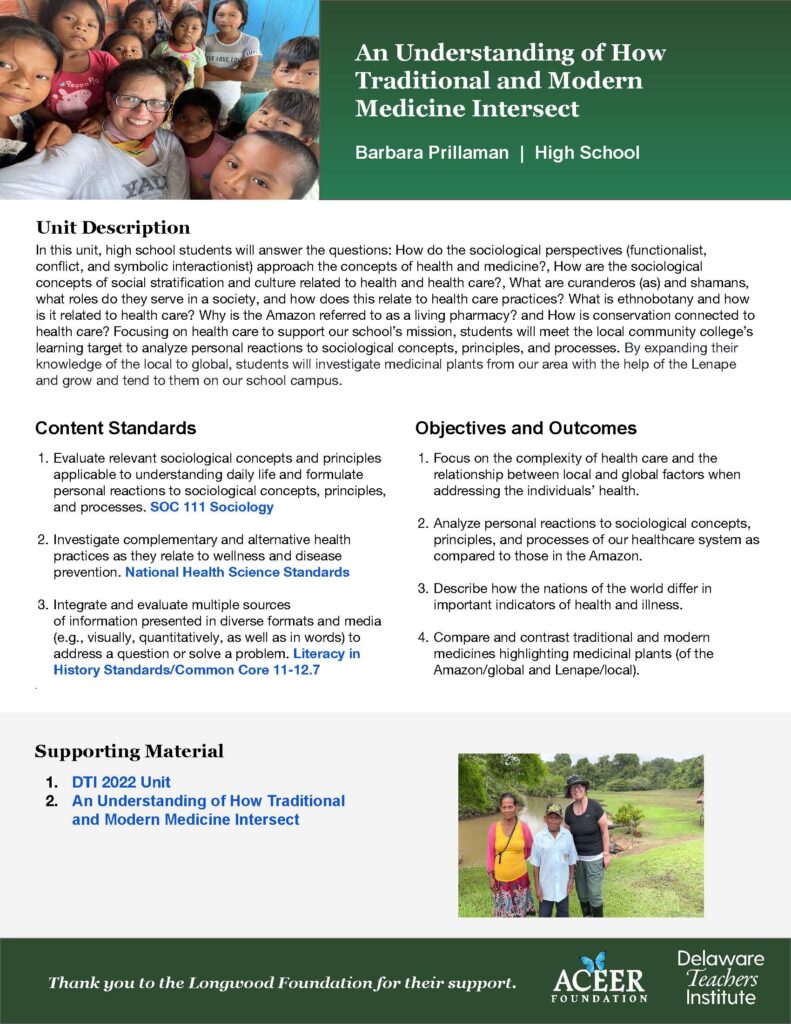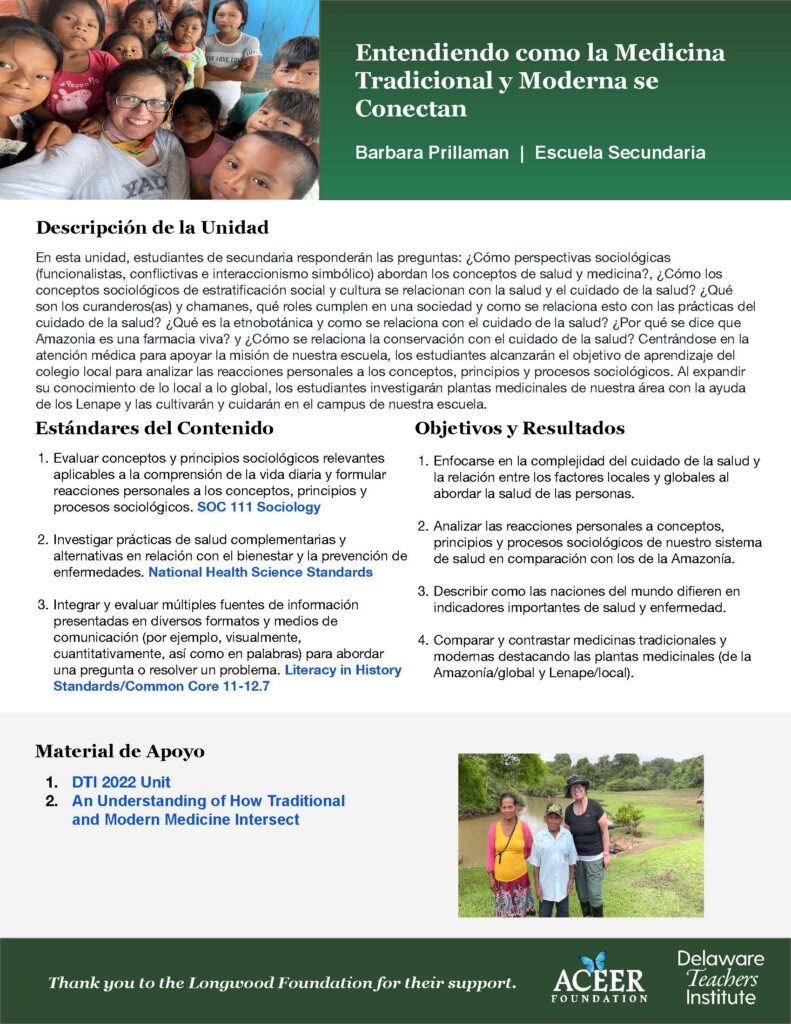Bringing the Amazon Home
Our cohort of teachers has developed their interdisciplinary curricula, including participating in field-based experiential learning in Pennsylvania in partnership with the Lenape Indian Tribe of Delaware, and in the Peruvian Amazon in partnership with the Maijuna Community of Sucusari.
Each curriculum is accompanied by multimedia learning materials that can be implemented by teachers worldwide. Curricula span the breadth of K-12 education, including environmental sciences, sociology, math, art, and more!
The Amazon Rainforest Measures Up
Joseph Parrett | Kindergarten
This mathematics unit is designed for kindergarten but would be appropriate for other primary students. Lessons focus on measurement and comparing the measurable attributes of organisms found in Delaware as well as the Amazon Rainforest. The goals of the unit are to use both standard and nonstandard units of measure to make comparisons and to develop within the students a connection to the rainforest and a basic understanding of its importance. Another focus of the unit is the conservation of the Amazon ecosystem. Students will be exposed to information through picture books, hands on activities, and videos featuring a puppet that were created on site in the Amazon.
Why Forests Matter
Merry Ostheimer | 2nd Grade
This science and social studies unit is designed for second grade but would be appropriate for other primary students. Lessons focus on understanding what a forest is and discovering how humans are connected to them. Employing the National Geographic Certified Educator strategies of Developing an Explorer’s Mindset, students will use their curiosity to steer their exploration of trees and forests.
“Leave No Child Indoors!” is the message that prevails throughout this unit, as constant connection with nature is encouraged. In the pursuit to understand how trees are gigantic carbon dioxide vacuum cleaners, students will enjoy nature walks and examine native plants as sources of medicine and how they are essential to their local ecosystems. Movement activities will lead students to experience how the parts of trees work and live out their life cycle. By the conclusion of the unit, students will have embraced the enduring understanding that their connection with nature is powerful and that trees are vital to our human world.
Nature and Youth Nurturing Each Other
Cynthia Papettas | 2nd Grade
In this culminating unit, students will apply their understanding of their own environment to understand other habitats and how plants, animals and humans depend on each other. This unit exposes students to the outdoors and gives them an opportunity to make connections with the environment they live in. This unit will have students make comparisons between the Amazon Rainforest and their own environment. Students will also develop an understanding of the diversity of human culture and the unique nature of places through engaging with stories from other Delaware educators.
Protecting and Conserving the World’s Environment
Christy Tapert | 2nd – 4th grades
In this unit, students will study the biodiversity of the Amazon rainforest. Combined with NGSS second, third and fourth grade students will learn about the forest layers- the emergent layer, the canopy, the understory, the forest floor and the rivers and the unique animals that live there. Students will investigate their favorite animal, whether it be in their residing state of Delaware or the Amazon rainforest, create it in clay and construct a diorama (National Core Arts Standards) of that animal in its habitat. Students will think about the distinguishing characteristics of their chosen animal and why it is adaptable to its environment. Students will also learn that rainforests are very important to every single person on Earth, and ways that rainforests help us.
Turning Windows into Mirrors
How Life in an Indigenous Amazon Community Compares to Our Own
David Ostheimer | Elementary School
This is a unit for first graders although it can be modified for any Elementary grade. What exactly is the Amazon? Where is it found? What plants and animals live there? Who are the people that live there and what is their daily life like? How does life in the Amazon compare to a student’s life in New Castle? How is it different? The Indigenous peoples of the Amazon are surrounded by nature, how can we connect to nature here in Delaware?
People & Ecosystems: A Mutual Dependency
Brooklynn Dodd | 5th Grade
This unit focuses on renewable and nonrenewable resources in Delaware’s ecosystems as well as renewable and nonrenewable resources in the Amazon. Students will build background knowledge on ecosystems, food webs, energy chains, and culture. They will then use that background knowledge to analyze content, compare and contrast information, and conduct their own research on the Amazon and its people/culture while simultaneously reflecting on their selves and their culture. This unit is structured to offer teachers the chance to differentiate instruction and provides opportunities for student-centered learning. By the end of this unit, students should not only be able to recall information on both locations’ ecosystems, but should have developed a holistic perspective that analyzes the interaction and reliance between humans and their resources and the importance of conservation.
Let Me Live!
Holly Bryk | Middle School Spanish
In this unit designed for a World Language class, I will focus on conservation in the target language, specifically the conservation of the Amazon Rainforest, concentrating on deforestation and its global impact on climate change. Students will discover how consumer choices can affect the Amazon Rainforest and ultimately our planet and the implications those choices have for the future of our world. Students will learn how to read and interpret authentic texts in the target language using the Visual Thinking Strategies method. The same strategies that students employ for close reading of text are easily applied to the interpretation of infographics. Students will practice both strategies as they read about and research deforestation of La Selva Amazoníca.
Honey Bees– The Key to A Sustainable Future
Ashley Carter | Middle School
This science unit engages students in learning about native pollinators and honeybees, and how human impact on their environment is leading to their population decline. Throughout this unit, students will participate in readings/discussions about the process of pollination, the vital role bees play in pollination, and how the local agriculture industry greatly depends on bees. Students will also learn about human impact in the Peruvian Amazon, how the Maijuna use sustainable beekeeping practices, and how traditional ecological knowledge (TEK) could be implemented by farmers and gardeners in Delaware.
Surviving a Changing Ecosystem
Monica Cohen | High School Science
This unit is designed for high school students taking Biology or Environmental Science. Students investigate biodiversity through locations called mineral licks by analyzing camera trap data from the Amazon and cameras set up locally on school grounds. Students explore ways in which human activities, like hunting and logging, have negatively impacted biodiversity and how changing our behaviors can have positive consequences. Students are exposed to camera trap images and first-hand accounts of a changing biodiversity in the Amazon by a Maijuna hunter. Students apply their understanding to our changing local ecosystem. The unit incorporates simulations, modeling, map and image analysis, and written arguments to a local lawmaker.
Ecosystem Engineers and Keystone Species
Mike Doody | High School Science
This AP Environmental Science unit focuses on biodiversity and ecology, using the Amazon Rainforest as an anchor ecosystem and engages students in authentic science experiences. Students analyze biodiversity data, create and execute their own data collection plan, and compare the biodiversity of Sucusari to two local ecosystems. They also examine camera trap footage, investigate biodiversity hotspots, examine the role of the tapir in the rainforest ecosystem, and then apply what they have learned to construct case studies of other ecosystem engineers and keystone species, including peccaries, wolves, beavers, and otters.
An Understanding of How Traditional and Modern Medicine Intersect
Barbara Prillaman | High School
In this unit, high school students will answer the questions: How do the sociological perspectives (functionalist, conflict, and symbolic interactionist) approach the concepts of health and medicine?, How are the sociological concepts of social stratification and culture related to health and health care?, What are curanderos (as) and shamans, what roles do they serve in a society, and how does this relate to health care practices? What is ethnobotany and how is it related to health care? Why is the Amazon referred to as a living pharmacy? and How is conservation connected to health care? Focusing on health care to support our school’s mission, students will meet the local community college’s learning target to analyze personal reactions to sociological concepts, principles, and processes. By expanding their knowledge of the local to global, students will investigate medicinal plants from our area with the help of the Lenape and grow and tend to them on our school campus.
